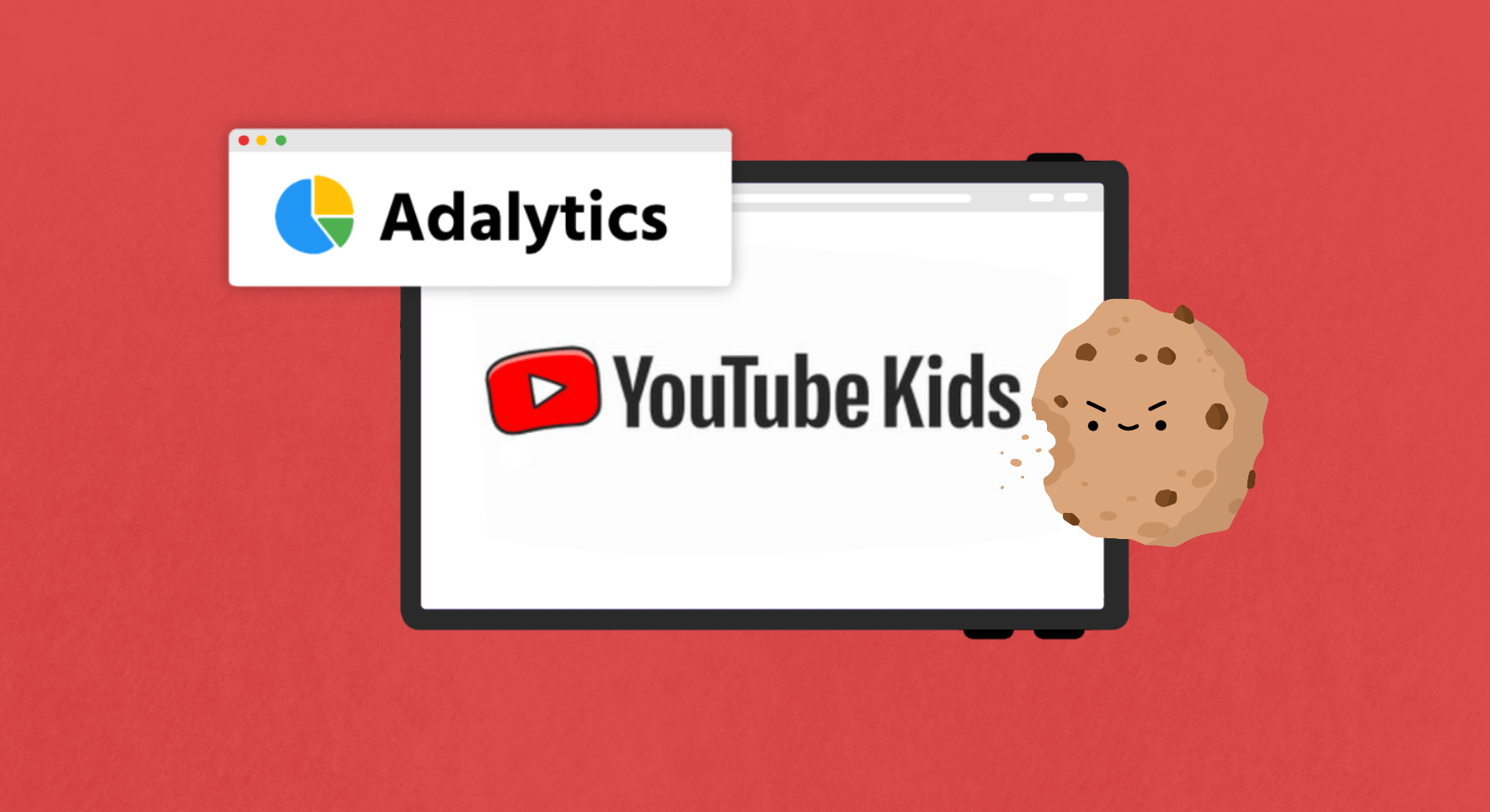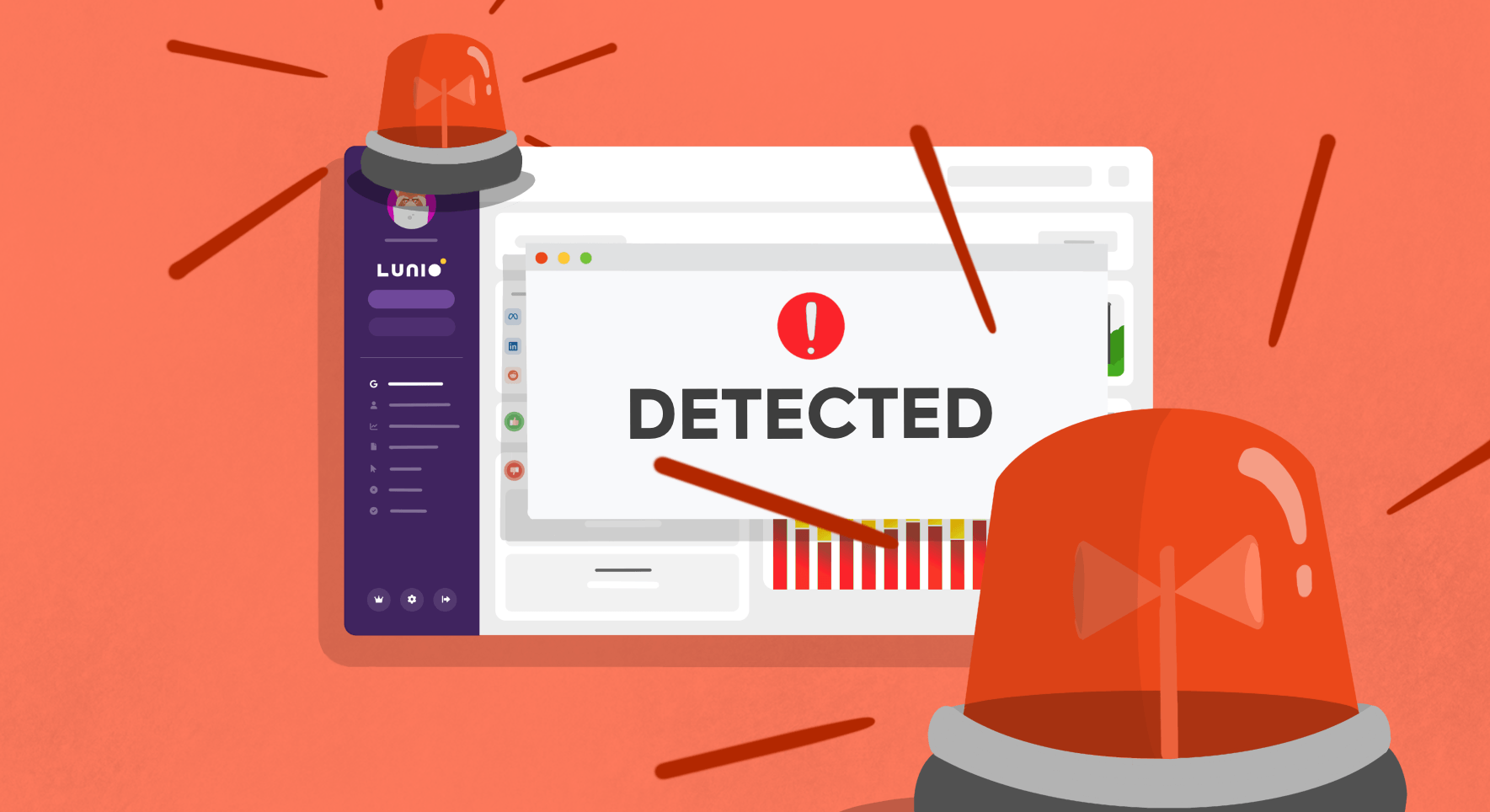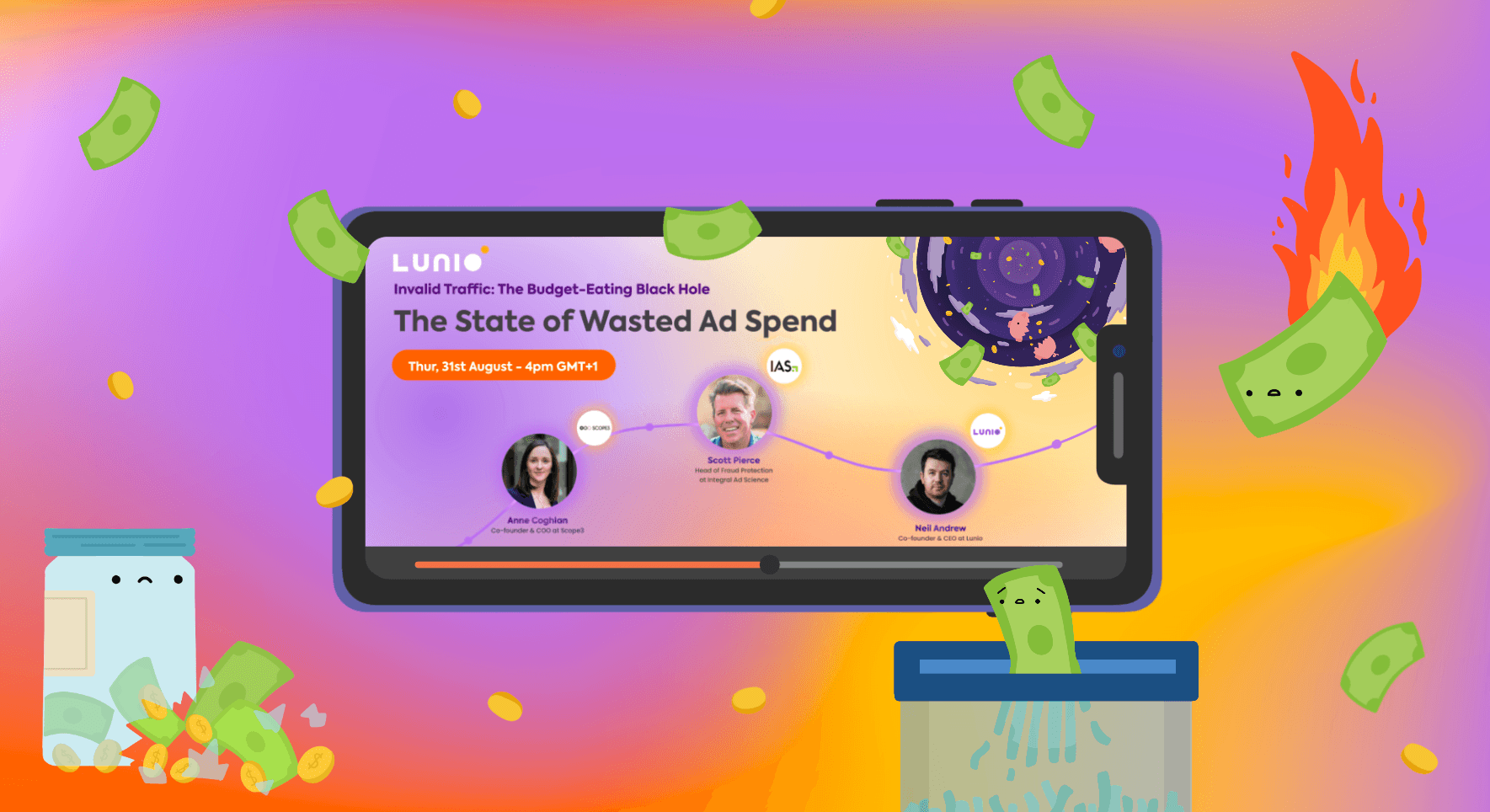Measurement solution Adalytics recently made some very bold claims that have been doing the rounds in the paid media space. You’ve probably heard about them or come across them, but in case you haven’t:
- Adalytics claims YouTube may have misled advertisers about TrueView video ads for 3 years
- Adalytics claims that YouTube may be intentionally harvesting data from millions of children
- Adalytics claims that Google may be serving behaviourally targeted or personalized ads on “Made for Kids” YouTube channels
These claims definitely piqued our interest here at Lunio, in part because we have one of the world’s largest sets of Google Ads API data we could use to verify them. Rather than respond immediately, we took time to analyse the relevant data required to investigate the validity of the various allegations being made.
Specifically, we wanted to dig into the claims that YouTube may be violating COPPA by harvesting data from children, and that Google serves behaviourally targeted/personalised ads on “Made for Kids” YouTube channels.
You can read Google’s response to this in full here. In short:
“Adalytics released a deeply flawed and uninformed report about how we manage advertising on made-for-kids content on YouTube, and our privacy policies for people under the age of 18 across our platforms… Despite its length, the new report failed to substantiate claims that we are in violation of government regulations, such as COPPA, or our own policies around ads personalization.”
What we found by analysing Lunio data supports Google’s argument and completely undermines the claims made by Adalytics.
Whilst Google could do more to increase transparency in digital advertising, we found no evidence to support the allegations made by Adalytics.
To the contrary, these claims appear to be entirely self-serving to further Adalytics own cause, with industry standard knowledge conveniently left out of the reports, showing a distinct lack of understanding of how digital advertising works in general.
We consider these claims damaging to both the digital advertising and media verification industries, and only serve to sow misplaced distrust within our community.
Did YouTube Mislead TrueView Advertisers?
To quickly address the original claim made by Adalytics (that YouTube may have misled TrueView advertisers/ads users), we turned to our research partners at Integral Ad Science (IAS).
IAS are the most respected voice in the viewability and ad verification space, with billions of data points used to inform their models and generate insights.
What we see from IAS data is that:
- Less than 8% of impressions on Google Video Partners were non-viewable (vs the up to 75% Adalytics claims)
- Less than 7% of all YouTube Owned & Operated inventory impressions were non-viewable
- This data is based on the industry standard MRC definitions for viewability
You can read the full IAS response here on this issue. Lunio does not track impression-level measurements, and so we don’t have first-party data to bring to the table here. However, as an MRC accredited organisation, we fully back IAS’s response to this issue.
Are YouTube Advertisers Harvesting Data From Millions of Children?
In a word, no. There’s no evidence for this. Just a presentation of “smoke & mirrors” with no smoking gun proof.
Adalytics’ most serious claim is that Google may be violating COPPA by harvesting information from children. Whilst Google has had issues with this in the past, there is zero evidence that they are harvesting such data today.
Adalytics claim centres around the following statement:
“YouTube appears to be setting or transmitting “advertising” cookies and identifiers on the devices of viewers who are watching “made for kids” videos as of July 2023.”
However, after reviewing Lunio’s data we can see that whilst cookies are indeed set on the device, these are not for the purposes of personalisation or personal identification.
Our evidence points to these cookies being used purely for viewability and fraud prevention purposes, not personalised tracking. This is further highlighted by the fact that Lunio’s invalid traffic protection tracking (which would be considered personalised tracking under Google’s definitions) has no recorded instances of being active on “Made for Kids” videos.
The “proof” offered by Adalytics of this claim is flaky at best. The report appears to claim requests to doubleclick.net (Google’s ad server) and any cookies being placed by the destination website (not YouTube itself) constitute the harvesting of children’s data.
This is not only untrue, it highlights a fundamental misunderstanding in how the digital advertising ecosystem works.
Countering Claims Made by Adalytics
Below, we unpack multiple claims made in the Adalytics report to reveal why they are misleading, uninformed, and untrue.
“Set long-lasting cookies specifically for the purposes of ad targeting and tracking on the browsers of consumers watching YouTube videos that are clearly labelled as “for kids”
- Lunio found zero evidence of cookies specifically for personalised ad targeting. Cookies for measurement, analytics, and security were present, which is to be expected and totally legal.
- YouTube/Google has zero responsibility or ability to determine what a website outside of their ecosystem sets on the browser. For example, if a user clicks an ad on YouTube Kids videos, and that linked website then sets a cookie or identifier, it is technically impossible for YouTube to prevent that, and it ultimately isn’t their responsibility. To push this as “proof” highlights a fundamental lack of understanding in how digital advertising works.
“Serve behaviorally and demographically targeted ads on YouTube videos that are clearly labelled as “for kids”
- Lunio found zero evidence of behaviourally or demographically targeted campaigns running on “for kids” videos. This was based on our data sample of millions of ad campaigns across tens of thousands of users. Targeting a user based on a wide interest cohort on a non-personalised basis would be perfectly acceptable here, but we haven’t tested for that specifically.
“Not provide certain technical indicators to programmatic advertisers that the content is targeted towards kids”
- This data is available to users via the Google Ads API, although we concede that access to this could be made easier.
- To analyse this data, Lunio used a mixture of the Google Ads API (to pull placement information) and the YouTube API (to determine if the placement is marked “Made for Kids” or not).
- Google Ads users can also opt out of all Made for Kids advertising, a point which Adalytics conveniently forgets to mention.
“The iPhone YouTube mobile app sets and shares a unique ad tracking ID every time a viewer on a “for kids” channel clicks on a YouTube ad”
- This is standard practice in digital advertising for the purposes of measurement and fraud prevention. It does not, in any way, indicate this ID is being used for the personalisation of ads being served – and we found zero evidence of it being used for this across our dataset.
“When a viewer clicks on an ad adjacent to a “for kids” video on the iPhone YouTube app, the YouTube app opens the advertiser’s website in a special in-app “webview” browser, where Google both sets various ad targeting and tracker IDs on the viewer’s iPhone, and the YouTube app allows other data brokers and ad personalisation vendors to gather and share unique identifiers on the viewer”
- The “webview” browser on iOS is just an implementation of Safari – there is nothing particularly special about it.
- Tracking IDs should be expected to be set as per above, for measurement and fraud prevention.
- Lunio found zero evidence of “data brokers” and ad personalisation vendors being able to collect or share these identifiers on made for kids videos. As mentioned previously, this doesn’t exclude the possibility of destination websites setting or collecting information on users – something entirely out of YouTube’s control.
Lastly, Adalytics claims:
“Google itself – despite having knowledge that a consumer was viewing “made for kids” YouTube videos – such as “ChuChu TV Nursery Rhymes for Babies” – was observed serving ads on those ‘made for kids’ videos for Google’s own products & services. If a toddler or baby accidentally clicks on Google product ads, Google’s ad product website proceeds to set ad targeting & personalization cookies on the child’s device, and put the child into a “re-targeting” audience pool for future ad personalisation in Google’s own product advertising campaigns.”
Once again this highlights a fundamental misunderstanding of the digital advertising ecosystem, for the reasons below:
- The ad served on the Made for Kids video (for Google products) is not personalised in any way, and serving this ad involved using zero personalised data.
- If the user clicks out to the ad destination, and accepts the cookie consent on the site, it is entirely reasonable and expected that they may be added to retargeting pools/audiences – especially if the ad is linked to a non-Google site. This is not a violation of COPPA as claimed by Adalytics.
- In the event the user was added to a retargeting audience, there is zero evidence across our data-set that this is ever used to target the user specifically on YouTube Kids channels – the two issues are not linked in any way.
In summary, based on our data and investigations we have seen zero proof that YouTube is harvesting the data of children, or that they are in violation of COPPA in any way.
This specific claim appears to be potentially self-serving to further the claimants own PR activity and gain news headlines, and does not appear based in reality nor in line with even an entry level understanding of how digital advertising works.
Are Advertisers Ads Appearing on YouTube for Kids Videos?
Now we’ve debunked the claim that Google is violating COPPA by harvesting children’s data, let’s take a look at whether advertisers are appearing on YouTube for Kids videos without their knowledge.
In short, the answer to this is yes, in limited circumstances, and usually without the advertisers knowledge. This is potentially a problem, albeit a campaign performance & efficiency one – not a legal issue.
There is the ability for advertisers to easily opt out of all YouTube Kids advertising, something that Adalytics conveniently forgets to mention in their claims. Advertisers should be aware of this setting to limit waste.
8% of PMax campaigns tracked by Lunio had at least one placement occur on a “Made for Kids” YouTube channel.
In practice, this is a very small number of campaigns and a very low level of activity. 92% of all Performance Max campaigns had no instances of running alongside Made for Kids videos on YouTube, based on a sample of thousands of campaigns.
In instances where advertisers had opted out of running alongside Made for Kids videos, Lunio found zero instances of their ads appearing alongside Made for Kids content.
However, this does raise a potential issue that many advertisers are aware their content is being run alongside Made for Kids videos unless they specifically choose to opt out.
Although these ads are not personalised, and pose zero legal risk to advertisers, they do contribute to inefficiency within their ad accounts and an increase in wasted spend. Lunio has already reached out to all advertisers concerned here to inform them their campaigns are displaying against Made for Kids videos. We’ll continue to do this on an ongoing basis with all Lunio clients through our success team.
We call on Google to improve their transparency within Performance Max reporting specifically. Advertisers should be able to clearly see how much of their spend is being applied to placements on Made for Kids videos, therefore helping to minimise this source of wasted spend.
To Wrap Up Our Findings
In conclusion we find that all three of Adalytics recent claims are flawed (one based on third party data and two based on our own data), based on incorrect or amateur assumptions, and omit critical information to try and paint a picture that fits their narrative.
As an invalid traffic protection & measurement provider ourselves, some may think that “siding with” ad networks like Google is counterproductive to our market positioning. However, at Lunio one of our core principles is to “be transparent – always”. We will always aim to shine a light on any industry claims to back them up with actual data, regardless of the story this tells.
We feel the claims in question are not only untrue, but damage trust in our industry and create confusion where there doesn’t need to be any. There are significant and very real challenges for marketers today in limiting wasted spend and improving campaign efficiency – they don’t need to be worried about misleading and embellished potential legal issues.




